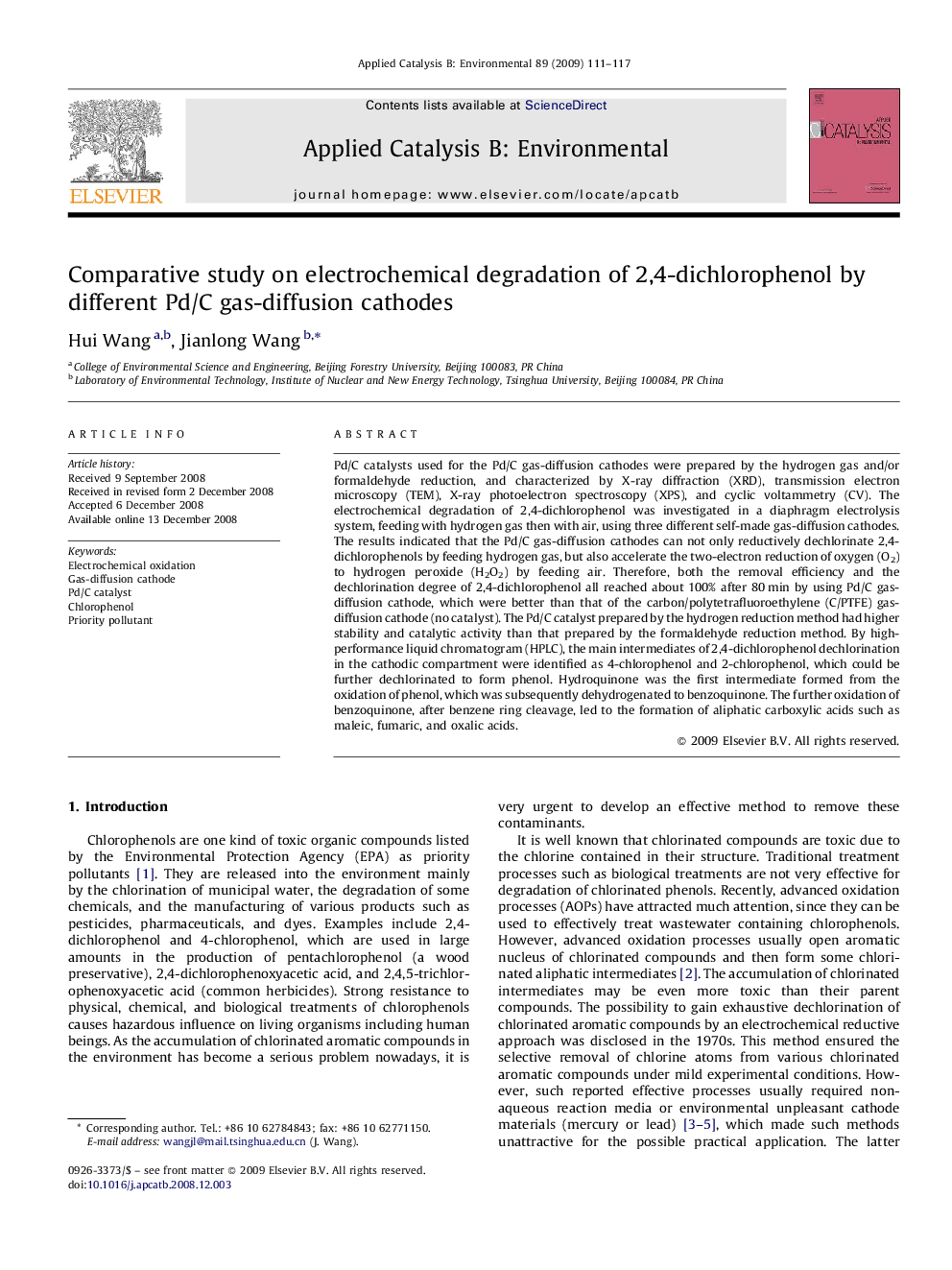| کد مقاله | کد نشریه | سال انتشار | مقاله انگلیسی | نسخه تمام متن |
|---|---|---|---|---|
| 47840 | 46483 | 2009 | 7 صفحه PDF | دانلود رایگان |

Pd/C catalysts used for the Pd/C gas-diffusion cathodes were prepared by the hydrogen gas and/or formaldehyde reduction, and characterized by X-ray diffraction (XRD), transmission electron microscopy (TEM), X-ray photoelectron spectroscopy (XPS), and cyclic voltammetry (CV). The electrochemical degradation of 2,4-dichlorophenol was investigated in a diaphragm electrolysis system, feeding with hydrogen gas then with air, using three different self-made gas-diffusion cathodes. The results indicated that the Pd/C gas-diffusion cathodes can not only reductively dechlorinate 2,4-dichlorophenols by feeding hydrogen gas, but also accelerate the two-electron reduction of oxygen (O2) to hydrogen peroxide (H2O2) by feeding air. Therefore, both the removal efficiency and the dechlorination degree of 2,4-dichlorophenol all reached about 100% after 80 min by using Pd/C gas-diffusion cathode, which were better than that of the carbon/polytetrafluoroethylene (C/PTFE) gas-diffusion cathode (no catalyst). The Pd/C catalyst prepared by the hydrogen reduction method had higher stability and catalytic activity than that prepared by the formaldehyde reduction method. By high-performance liquid chromatogram (HPLC), the main intermediates of 2,4-dichlorophenol dechlorination in the cathodic compartment were identified as 4-chlorophenol and 2-chlorophenol, which could be further dechlorinated to form phenol. Hydroquinone was the first intermediate formed from the oxidation of phenol, which was subsequently dehydrogenated to benzoquinone. The further oxidation of benzoquinone, after benzene ring cleavage, led to the formation of aliphatic carboxylic acids such as maleic, fumaric, and oxalic acids.
Journal: Applied Catalysis B: Environmental - Volume 89, Issues 1–2, 3 July 2009, Pages 111–117